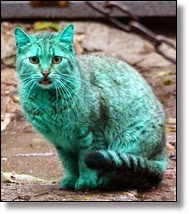All cats and kittens should be either spayed or neutered unless the owner is in the business of raising purebred cats. The days of letting the family cat have a litter of kittens so that kids could observe the miracle of birth are long gone. Animal rescue groups have done an excellent job communicating the tragedy of homeless pets. Most people now realize that stray and feral cat overpopulation is an enormous problem.
According to 2008 stats from the Humane Society, there are approximately 88 million owned pet cats in the United States (more than dogs!). Nearly one third of all US households own a cat and on average most of those homes have two cats. Eighty seven percent of the pet cats in the U.S. are spayed or neutered. It's a very common procedure and there are many benefits.
What Is Spaying And Neutering?
Sterilizing a cat is known as neutering for males and spaying for females. Neutering a male cat is a fairly simple procedure performed by a professional veterinarian. The cat is placed under general anesthesia, and the testes are removed through an incision in the scrotum. The incision is very small and stitches are usually not even necessary.
Spaying a female cat is a more involved and invasive procedure, and as such is often more expensive. The ovaries, fallopian tubes and uterus are removed after the cat is immobilized with general anesthesia. The operation is known as an ovario-hysterectomy. The abdominal area is shaved and the surgical wound usually only requires a few stitches.
Kittens should be spayed or neutered when they reach sexual maturity, which is usually between four and six months of age. However a cat can be safely spayed or neutered at any age, so even older adopted cats should have this procedure.
Some rescue organizations participate in a "catch and release" program where homeless cats are captured, neutered or spayed and released. This is considered more humane than euthanizing strays. The catch and release program is sometimes known as TNR (Trap-Neuter-Return) and the cats that are sterilized have part of one ear clipped. If you adopt a cat with a clipped ear, he or she has almost certainly been already spayed or neutered as a result of this effort.
Why Spay Or Neuter Your Cat?
There are many benefits to spaying or neutering your cat, and they extend to your pet, your family, your home and society in general.
Stray and feral cat overpopulation is a massive problem. The life of a homeless cat can be miserable and harsh. Feral cats also contribute to the destruction of other indigenous wildlife, especially birds.
Un-spayed female cats may be restless and noisy and exhibit other behavior problems.
Males who are not neutered (also known as Tom Cats) have many behavior problems, including a tendency to roam if allowed outside and a habit of spraying strong smelling urine inside the house to mark their territory.
Spayed and neutered cats generally have fewer health problems and a longer life expectancy.
Is there a downside to sterilizing your pet cat? Not really. Sometimes neutered males require slightly less food after the procedure so they don't gain weight. But most cats are healthier, happier and calmer if they've been spayed or neutered.
Fast Facts On Cat Sterilization
Most animal shelters and rescue groups require cats to be spayed or neutered before they will allow them to be adopted. The new owner should anticipate picking up the cost for this procedure.
The cost of spaying or neutering varies widely depending on the U.S. location, but will range from a low of $50 through a pet shelter to a high of $200 for a private veterinarian in a large urban area.
In most cases your cat will be able to come home the same day, especially if they are scheduled to be spayed or neutered in the morning.
For nervous cat owners who worry excessively about their beloved kitty, most vets are happy to call you after the procedure is over to let you know how your pet is doing.
Millions of beautiful cats and kittens are exterminated each year by animal shelters who can't find enough homes for them. The famous artist Leonardo da Vinci once said "even the smallest feline is a masterpiece." Cat owners can help make sure that each precious fur covered work of art has a happy home. The best way to accomplish this goal is through responsible spaying and neutering.
FOLLOW US!





























.jpg)



.jpg)

